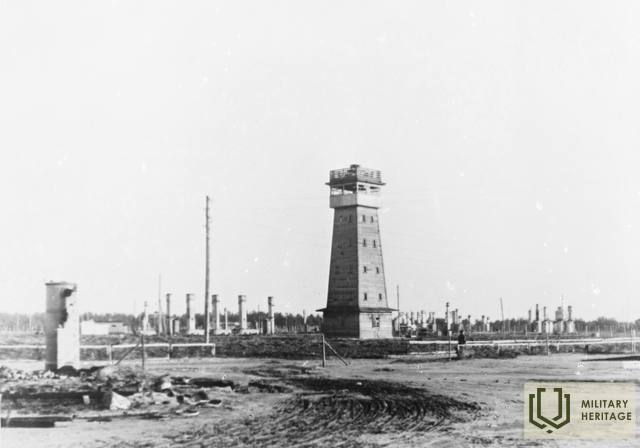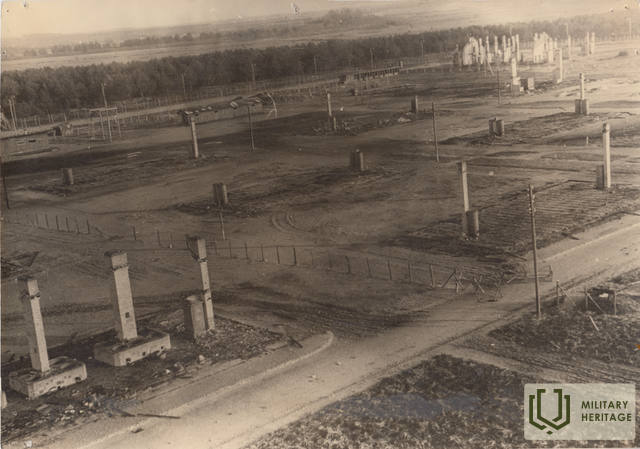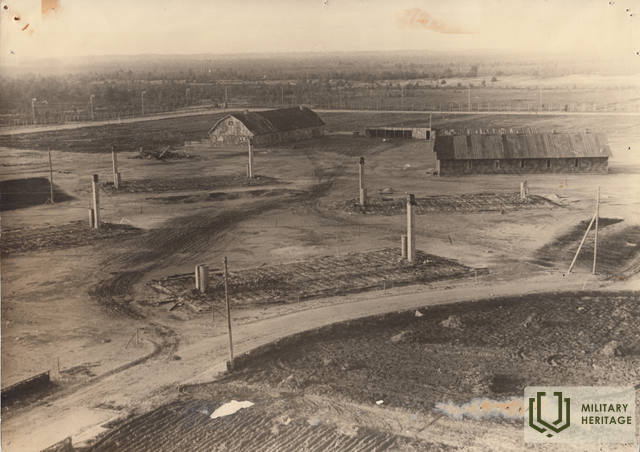About the Salaspils Memorial as a symbol of the ideology of the Soviet occupation regime.
The description vividly describes the extent to which a place of remembrance is politicized and its role in the ideology of the Soviet Union. The text states that one of the main goals is to fight the "rebirth of fascism". This shows that efforts with ideological infrastructure to hide communist crimes and prevent dissent are continuing. Memorial sites, Soviet army cemeteries and museums, and various cultural events maintained the myth of the "liberation of Latvia" and the "Brother Soviet Union." An inverted view of the events of World War II in Latvia was created using the facts of Nazi crimes.
"(..) Every year in the territory of the Salaspils ensemble there is a memorial day for the victims of German fascism" It must not be forgotten ". It has become a tradition that this day with a large rally always takes place in July - the previous Sunday before the anniversary of the founding of Soviet Latvia. Then thousands of workers and former prisoners gather in Salaspils. The latter arrive in the territory of the ensemble a couple of hours before the rally. They have a lot to discuss with each other. Friendly, touching meetings can be seen, as former members of the suffering have arrived not only from all districts of the republic, but even from Moscow, Leningrad, Belarus and Lithuania. Every year, ex-prisoners are registered, their addresses checked and they are asked if anyone has found out about the missing members they are still looking for. All this is organized and done by the office of a group of former political prisoners, which works at the Riga section of the Soviet War Veterans Committee. There are currently 500 former prisoners registered in the group. The members of the group consider the fight against the resurgence of fascism to be the main task. They often and often meet with school youth, employees of companies and institutions, with rural people, lead excursions around the territory of Salaspils, collect materials for the Salaspils Ensemble Museum. Members of the group are awarded honorary medals and badges of the Soviet War Veterans Committee for their brisk anti-fascist activities before the rally. The solemn moment begins - a procession to the ceremonial square of the Salaspils ensemble, where the rally takes place. Former prisoners with a crown in front of the columns. There is mourning music. The rally is marked by a moment of silence in honor of the 100,000 murderers in Salaspils. The first to speak was a representative of the former prisoners. He talks about the crimes committed by the fascists in Salaspils and promises to devote all his efforts to peace on behalf of his members. Representatives of workers, soldiers, communist youth speak. Music plays, choir sings, poetry reads. Laying flowers and wreaths at the end of the rally. It seems Salaspils is gradually sinking into flowers. All the participants of the rally are walking past the mountains of flowers, silently wishing that our future generations would never experience the horrors of war again.
An extract from the test is taken from the Soviet-era edition of the Salaspils Death Camp (1973). The author of the text is unknown.
Related timeline
Related objects
Salaspils Memorial Ensemble
Salaspils Memorial and historical exhibit is located in Salaspils municipality, 1.2 km from the Riga-Daugavpils A6 highway. The Salaspils Memorial was unveiled in 1967 on the site where during World War II the Salaspils Camp was once located. It is a place that was used for Soviet propaganda and is shrouded in myths and half-truths. It is a good representation of the Nazi crimes and Communist ideology that was carried out during each of the occupations. This repressive camp was a part of the German penitentiary system. It had similarities with concentration camps, but it was not the same thing. It was created so that there would not be a disproportionate number of prisoners in Riga prisons. This camp was an “extension of the police prison”. And a variety of people were imprisoned here – Jews, the Red Army prisoners of war, absentees, political prisoners, criminals, prostitutes, members of the Latvian resistance movement, Baltic soldiers in the German Army or police, and others. The camp could hold up to 2,200 prisoners. The main cause of death (~2000) was malnutrition, working conditions, corporal punishment and illness.








